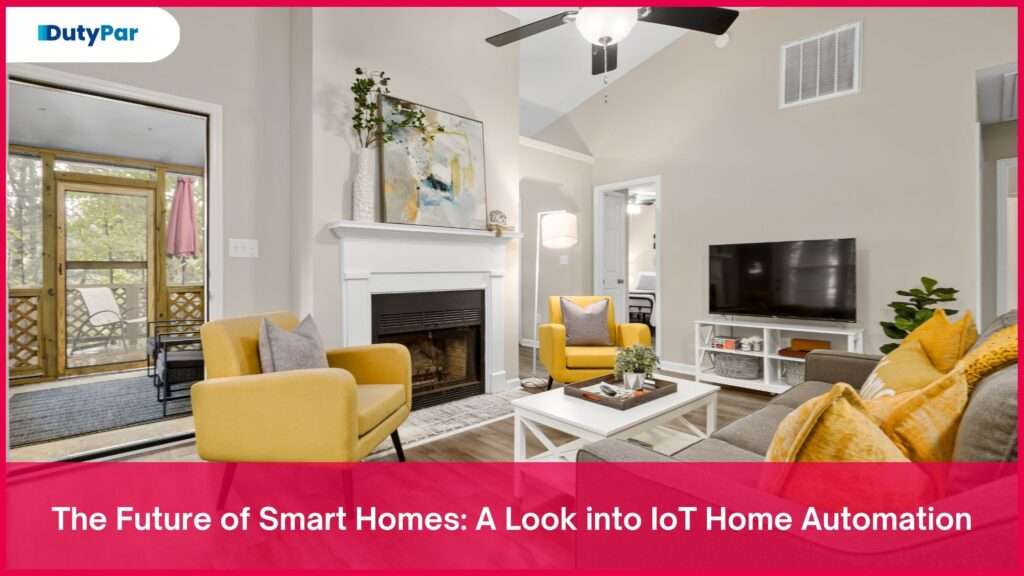
Smart homes are becoming increasingly popular. Thanks to the Internet of Things (IoT), homeowners can now enjoy a more convenient and efficient living experience. In this article, we’ll take a closer look at IoT home automation and explore its future.
What is IoT Home Automation?
IoT home automation refers to the use of IoT devices to control various aspects of a home, such as lighting, temperature, security, and entertainment.
These devices are connected to the internet and can be controlled remotely using a smartphone, tablet, or computer.
IoT devices use sensors and other technologies to gather data about the home environment and then make adjustments based on that data.
For example, a smart thermostat can detect when you’re away from home and adjust the temperature accordingly, saving energy and money.
The Benefits of IoT Home Automation
IoT home automation has a number of benefits for homeowners. Here are just a few:
1. Convenience – With IoT home automation, you can control various aspects of your home from anywhere in the world. For example, you can turn on the lights or adjust the temperature before you arrive home from work.
2. Energy Efficiency – IoT devices can help you save energy and reduce your carbon footprint. For example, a smart thermostat can learn your habits and adjust the temperature accordingly, saving energy and money.
3. Improved Security – IoT devices can enhance your home’s security by providing real-time alerts and remote access to security cameras and other devices.
4. Entertainment – IoT devices can also enhance your home entertainment experience by providing easy access to streaming services and other content.
The Future of IoT Home Automation
So, what does the future hold for IoT home automation? few trends to watch out for:
• Integration with Voice Assistants – IoT devices will increasingly be integrated with voice assistants such as Amazon Alexa and Google Assistant, making it even easier to control your home with your voice.
• Increased Interoperability – As more and more IoT devices hit the market, there will be a greater need for interoperability. In other words, devices from different manufacturers will need to be able to work together seamlessly.
• More Advanced Sensors – IoT devices will continue to become more advanced, with sensors that can detect everything from air quality to water leaks.
• Enhanced Cybersecurity – With more devices connected to the internet, there will be an increased risk of cyberattacks. As a result, cybersecurity will become even more important in the future of IoT home automation.
• Personalization – IoT home automation will become increasingly personalized to individual users. Devices will learn your habits and preferences and adjust accordingly. For example, a smart lighting system could automatically adjust the lighting based on your preferred levels and routines.
• Health and Wellness – IoT devices will have a greater focus on health and wellness. For example, sensors could monitor air quality and adjust HVAC systems to improve indoor air quality. There could also be devices that track sleep patterns and offer recommendations for improving sleep quality.
• Sustainability – IoT home automation will continue to have a focus on sustainability. For example, devices could automatically adjust energy usage based on renewable energy availability, such as solar panels or wind turbines.
• Artificial Intelligence – IoT devices will become more intelligent with the use of artificial intelligence (AI). AI algorithms could analyze data from multiple sources to optimize home systems and provide personalized recommendations for users.
• Greater Accessibility – IoT devices will become more accessible to individuals with disabilities, allowing for greater independence and control over their living environment. For example, devices could be controlled with voice commands or through a smartphone app that is designed with accessibility features.
• Collaboration – The future of IoT home automation will see greater collaboration between manufacturers, service providers, and consumers. This collaboration will be necessary to ensure that devices work seamlessly together and that data is shared securely and ethically.
Conclusion
IoT home automation is the future of smart homes. With the ability to control various aspects of your home from anywhere in the world, it’s easy to see why it’s becoming increasingly popular.
As technology continues to evolve, we can expect to see even more advanced IoT devices and greater interoperability between devices from different manufacturers. However, it’s important to remember that with increased connectivity comes increased risk, so cybersecurity will be a key consideration in the future of IoT home automation.
In summary, the future of IoT home automation is exciting and filled with potential. From personalized experiences to greater sustainability and accessibility, IoT devices will continue to improve our quality of life. However, as with any new technology, it is important to be aware of potential risks and take steps to ensure cybersecurity and ethical data use.
